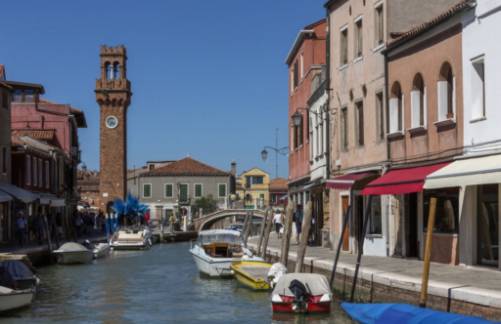For centuries, the island of Murano has been synonymous with exquisite glassmaking, boasting a rich history of craftsmanship and innovation. The tradition of Murano glassmaking has not only shaped the economic landscape of the region, but has also influenced the artistic world with its intricate techniques and breathtaking creations. From the renowned glassmakers who have left a lasting legacy to the challenges and triumphs faced by the industry over the years, the story of Murano glass is a testament to the enduring power of a time-honored craft.

Techniques and Innovations in Murano Glassmaking
For centuries, the island of Murano has been a renowned center for glassmaking, known for its intricate techniques and innovative creations. The artisans of Murano have developed various techniques that have been passed down through generations, ensuring the preservation of this age-old tradition.
One of the most famous techniques in Murano glassmaking is known as "millefiori," which involves creating intricate patterns using slices of colored glass canes. This technique dates back to the 15th century and continues to be a popular method used by Murano glassmakers today. Another popular technique is "aventurine," which incorporates pieces of metal such as copper or gold to create a shimmering effect in the glass.
In addition to these traditional techniques, Murano glassmakers have also been at the forefront of innovation in the industry. In the 17th century, Angelo Barovier invented cristallo, a clear and colorless glass that was highly prized for its purity and brilliance. This innovation revolutionized glassmaking and cemented Murano's reputation as a leader in the field.
Over the years, Murano glassmakers have continued to push the boundaries of traditional techniques, experimenting with new materials and designs to create stunning works of art. The island remains a hub of creativity and innovation in the world of glassmaking, drawing visitors from around the globe to witness the mastery of these skilled artisans.
Economic Impact of the Glassmaking Industry in Murano
The economic impact of the glassmaking industry in Murano has been significant throughout history. The industry has provided employment for generations of Murano residents and has contributed to the prosperity of the local economy. In addition to creating jobs for glassmakers, the industry has also supported ancillary businesses such as suppliers of raw materials, transport companies, and retailers. The demand for Murano glass products has led to the growth of tourism in the region, with visitors from around the world coming to see the skilled artisans at work and purchase their unique creations. Overall, the glassmaking industry in Murano has played a crucial role in sustaining the economic vitality of the island and has helped to establish its reputation as a center of artistic excellence.
Famous Murano Glassmakers Throughout History
These artisans have contributed significantly to the reputation and legacy of Murano glassmaking.
One of the most notable figures in Murano's history is Angelo Barovier, who is credited with perfecting the cristallo technique in the 15th century. This revolutionary technique involved creating colorless and transparent glass, which was highly prized by the elite of the time. Barovier's contributions to Murano glassmaking are still celebrated and admired today.
Another prominent figure in Murano's history is Pietro Bigaglia, who is known for his intricate and detailed glass engravings. Bigaglia's work was highly sought after by collectors and art enthusiasts, and his pieces are considered to be some of the finest examples of Murano glass artistry.
In the 20th century, the Seguso family emerged as prominent figures in the Murano glassmaking industry. Artists such as Archimede Seguso and Flavio Poli gained international recognition for their innovative designs and techniques. Their creations are highly sought after by collectors and are considered to be some of the most iconic pieces of Murano glass art.
Other notable Murano glassmakers throughout history include Dino Martens, Lino Tagliapietra, and Livio Seguso, all of whom have made significant contributions to the artform and have helped to solidify Murano's reputation as a center of glassmaking excellence.
Overall, the famous Murano glassmakers throughout history have played a crucial role in shaping the identity and legacy of Murano glassmaking. Their innovative techniques, designs, and artistic vision have helped to elevate Murano glass to a level of global recognition and admiration.
Decline and Revival of the Murano Glass Industry
The decline of the Murano glass industry began in the late 18th century as cheaper glass products from other regions flooded the market. The traditional techniques and craftsmanship of Murano glassmakers struggled to compete with mass-produced glass items. The industry experienced a significant downturn during this time, with many factories closing down and skilled artisans leaving the profession.
However, the Murano glass industry experienced a revival in the 20th century thanks to efforts to preserve and promote the traditional techniques and craftsmanship that make Murano glass unique. Artisans and glassmakers worked to innovate and modernize their practices while still honoring the age-old traditions that have been passed down through generations.
Today, the Murano glass industry continues to thrive, with tourists from around the world visiting the island to witness the artistry of the glassmakers and purchase their exquisite creations. The industry has adapted to changing times, incorporating modern technologies and techniques to ensure its continued success while staying true to its rich history and cultural heritage. The revival of the Murano glass industry serves as a testament to the enduring value and beauty of this age-old tradition.
